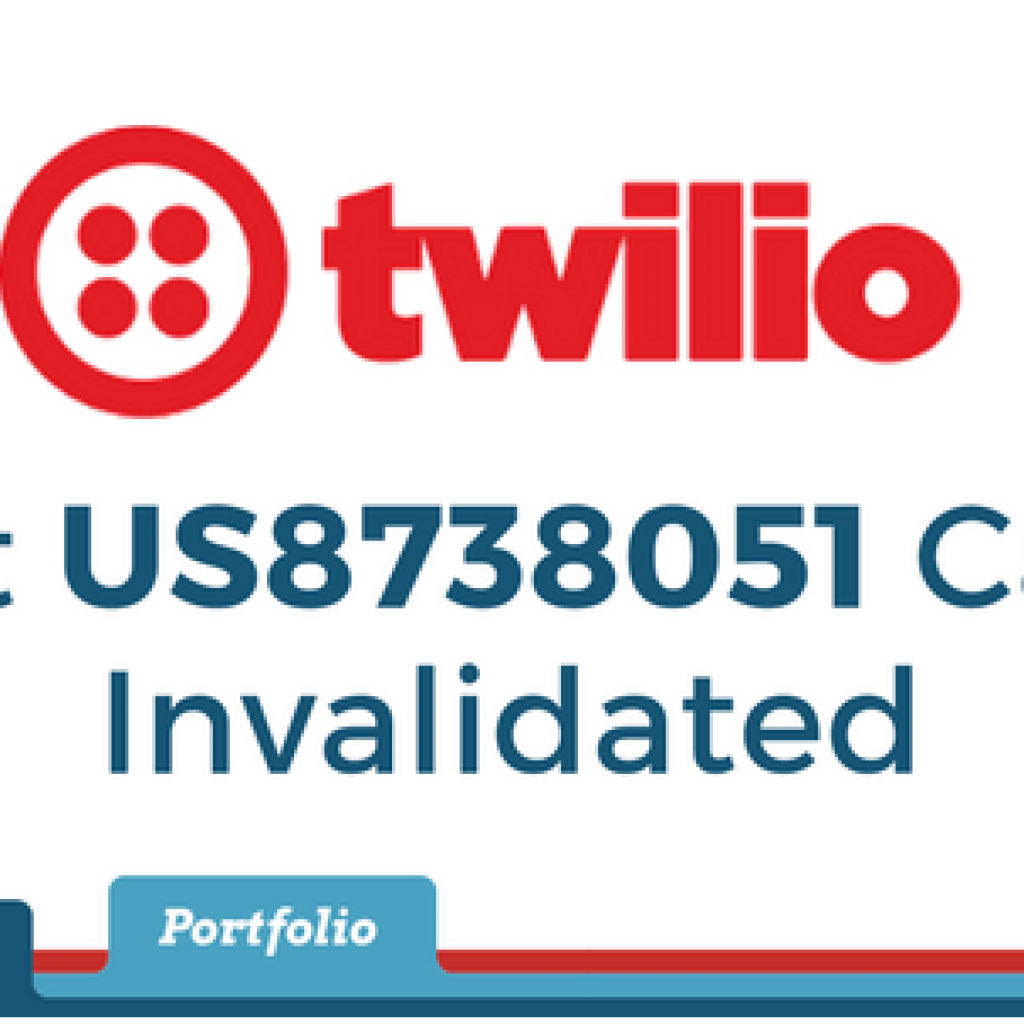Has this ever happened to you – You are conducting a prior-art search and something keeps on jabbing at the back of your head, questioning whether you have explored everything?
Well, it happens to most of us, particularly while exploring non-patent literature.
Let’s assume, that you have finally managed to exhaust all the patent literature available and are now moving to non-patent documents.
What’s the first thing you do?
If you’re like me, you would go with your rather experienced gut feeling (right?) and choose the database that you feel can yield the most relevant results. The Holy Grail of Non-patent literature, so to speak.
However, there are a lot of databases to choose from, whose coverage may vary from technology to technology. Resultantly, sometimes the selection of the right database can get a bit tricky. It becomes more like choosing the right pond, rather than choosing the whole sea, for fishing.
Now, once you have managed to select the database, the next important thing is to exploit its capabilities to the fullest. You can’t catch a fish by just selecting the right pond, you should also know how to effectively cast the net or set the hook.
And now, perseverance comes into the picture. You gotta try! Try hard. And keep on trying until you have come across something useful or have made sure there’s nothing.
Let me share a small anecdote on this.
We were working on a case where we required prior-art disclosing an e-cigarette with an elongated heating element. The heating element was supposed to be present in a heating chamber with a portion of the element extending axially in the chamber. The arrangement was such that when a tobacco rod/cigarette was placed in the chamber, the heating element should pierce the tobacco rod/cigarette and could be used for heating the same.
However, the patent was pretty old, and consequently, there was very limited literature disclosing similar technology before the cut-off date. The e-cigarettes used up until that time used to heat tobacco substrates from the outside. Although we did come across some close results during the search, we knew that they won’t be enough to win this one.
Now, moving to the non-patent search, we decided to start with ‘Truth Tobacco Industry Documents’; the reason being, it was highly related to the domain and from our experience, we knew that it has a huge collection of documents that disclose inventions for which patents weren’t filed.
However, even after going through a lot of strings on the database, we didn’t come across any promising results. So, we brainstormed a bit, changed our search strings, and began again. As we were going through these new results we came across a document titled “Philip Morris Patent Database Search Invention Disclosures for which Patent Applications were Not Filed”. Below is the screenshot –
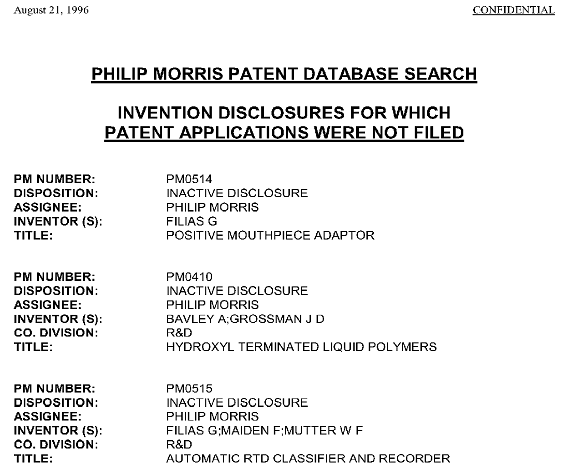
As the name suggests, the document contained a list of inventions for which PMI hadn’t filed any patent. The list also revealed abstracts of these inventions along with their titles. Out of curiosity, we began analyzing the document (in detail) and came across an invention titled ‘Method of making a heater with bullet shape design’. From the title itself, it seemed quite similar to what we were looking for and we started to dig deeper to know more.
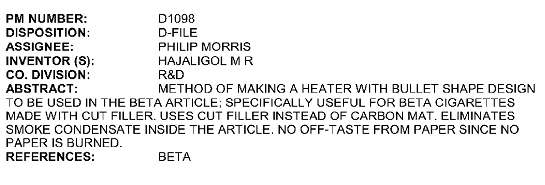
Now, ‘Truth Tobacco Industry Documents’ usually have a document number associated with them. To track the bullet-shaped heater document, we searched the document number i.e. “PM NUMBER – D1098” on the database. The search led us to a few documents that mentioned this specific document number in them. And among these, we found a hand-written document that disclosed the concept we were looking for.
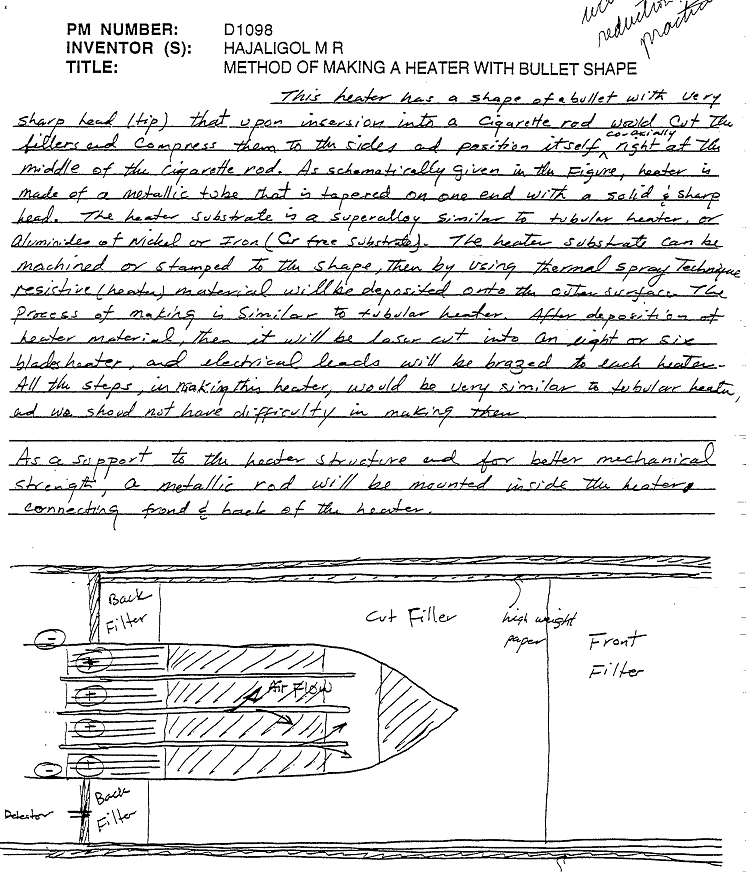
This could serve as prior art, but we did not stop here (That’s simply not us! ). We wanted to find something more substantial.
Since we now had the name of the inventor (a new lead to follow up on), we searched for him on the TTID database. And we got lucky again; it led us to one more document having the same disclosure.
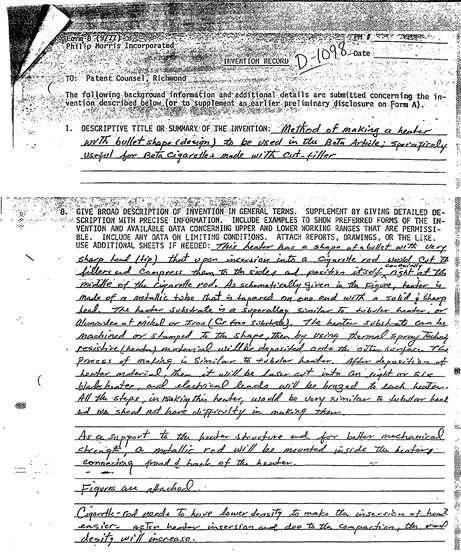
Much better! This could qualify as a really strong reference which could help turn the table in our client’s favor.
When it comes to prior art searches, I have noticed that it makes sense to acknowledge that jabs and prods in the back of our heads and make sure to not leave any stone unturned. So, the next time you are going for a prior art hunt, don’t take that click in the back of your head for granted nor the non-patent literature search.
[Hey! Here’s a secret] – you have found the right pond, now to catch that pretty prior-art fish all you gotta do is, case the net! Fill the form below.
Author: Mohd. Umar and Ganesh Solanke (Senior Research Analysts, Search Team)









